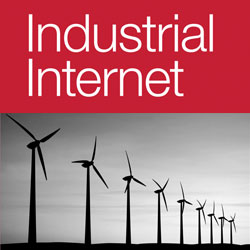The specific impetus for this post was an article in The Boston Globe about heart stents that fit perfectly because they’re 3-D printed individuallly for each patient.
That prompted me to think of how manufacturing may change when three of my favorite technologies — nanotech, 3-D printing and the Internet of Things — are fully mature and synergies begin (as I’m sure they will) to emerge between the three.
I’m convinced we’ll see an unprecedented combination of:
- waste elimination: we’ll no longer do subtractive processes, where a rough item is progressively refined until it is usable. Instead, products will be built atom-by-atom, in additive processes where they will emerge exactly in the form they’re sold.
- as with the stents, products will increasingly be customized to the customer’s exact specifications.
- the products will be further fine-tuned based on a constant flow of data from the field about how customers actually use them.
Guess what? The same company is in on the cutting edge of all three: General Electric (no, I’m not on their payroll, despite all my fawning attention to them!):
- Their Industrial Internet IoT initiative is resulting in dramatic changes to their products, with built-in sensors that relay data constantly to GE and the customer about the product’s current status, allowing predictive maintenance practices that cuts repair costs, optimizing the device’s performance for more economical operations, and even allowing GE to switch from selling products to leasing them, with the lease price determined dynamically using factors such as how many hours the products are actually used. Not only that, but they practice what they preach, with 10,000 sensors on the assembly line at their Durathon battery plant in Schenectady, plus sensors in the batteries themselves, allowing managers to roam the plant with an iPad to get instant readings on the assembly line’s real-time operation, to fine-tune the processes, and to be able to spot defective batteries while they are still in production, so that 100% of the batteries shipped will work.
They’re also able to push products out the door more rapidly and updating them quicker based on the huge volumes of data they gather from sensors built into the products: “… G.E. is adopting practices like releasing stripped-down products quickly, monitoring usage and rapidly changing designs depending on how things are used by customers. These approaches follow the ‘lean start-up’ style at many software-intensive Internet companies. “’We’re getting these offerings done in three, six, nine months,’ he [William Ruh] said. ‘It used to take three years.’”- They’ve made a major commitment to 3-D printing, with 100,000 3-D printed parts scheduled to be built into their precision LEAP jet engines — a big deal, since there’s not a great deal of fault tolerance in something that may plunge to the earth if it malfunctions! As Bloomberg reported, “The finished product is stronger and lighter than those made on the assembly line and can withstand the extreme temperatures (up to 2,400F) inside an engine.” They’re making major investments to boost the 3-D printers’ capacity and speed. Oh, and did I mention their precedent-setting contest to crowd-source the invention of a 3-D printed engine mount?
- They’re also partnering with New York State on perhaps the most visionary technology of all, nanotech, which manipulates materials on the molecular level. GE will focus on cheap silicon carbide wafers, which beat silicon chips in terms of efficiency and power, leading to smaller and lighter devices.
GE is the only member of the original Dow-Jones Index (in 1884) that still exists. As I’ve said before, I’m astounded that they not only get it about IoT technology, but also the new management practices such as sharing data that will be required to fully capitalize on it.
Thomas A. Edison is alive and well!


